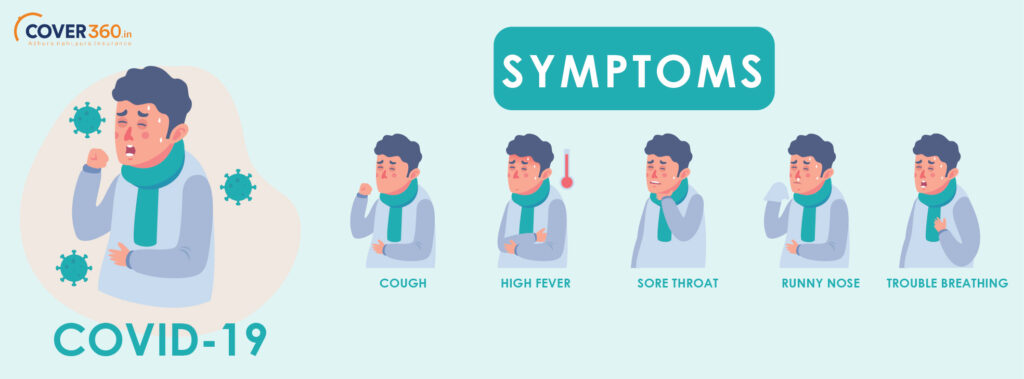Coronavirus cases in India are touching a new all-time high. Cases with more than 2 lakh daily across the country are pushing the situation at an alarming level. The good part is the vaccination drive and speedy recovery. However, the new COVID-19 strains are causing a plethora of symptoms, including some unusual ones.
The question is whether the new variants are causing a surge in cases.
The influx of the double mutant virus and many other infectious strains has worsened the situation. Many experts say that the new coronavirus has become a lot stronger and is more infectious with severe complications. It is causing a rise in cases. Moreover, the virus is causing more symptomatic infections now.
How Does the Mutation in Virus Happen?
Most commonly, viruses mutate constantly. And SARS-CoV 2 is just like other viruses. Its mutations occur randomly as the virus replicates, and many different virus strains have been identified right from the beginning of the pandemic. In many cases, viruses also mutate due to the selection of pressure. This means, antibodies available in the body cause threat to the existence of the virus. It results in the occurrence of mutations that are purposeful to evade host defenses.
Such mutation occurs when an eminent percentage of the population develops antibodies either through previous infections or any past vaccinations. It usually takes years to occur.
According to recent studies, new coronavirus strains can quickly evade immune defenses present along with some vital organs. And, it discharges an attack in more forceful ways. The studies have also established that fever which is not preponderantly seen with all cases holding the original strain is a more severely observed symptom in cases tested positive for the new mutation.
It is therefore important not to ignore the symptoms of new COVID-19 strains. Instead, following the coronavirus appropriate behaviour and identifying and isolating symptoms is mandatory when we come across them.
Common Symptoms of New Coronavirus Strains
Although coronavirus patients are suffering from different symptoms, some commonly seen symptoms are the following.
Body ache and muscle pain – The new coronavirus strains also cause body ache and muscle pain. A number of COVID-19 patients complain of muscle pain as their primary symptoms and have rapidly gone up. Excruciating joint pain, muscle ache, and body ache signal battling the virus. As per health experts, the primary reason for pain is myalgia. Myalgia is a result of the virus that attacks important muscle fibers and tissue linings. Widespread inflammation can also cause weakness, joint pain, and body pain during the course of the infection.
Distorted taste and loss of smell – Distorted taste and loss of smell are incurable and possibly the weirdest symptoms of new pandemic strain. According to medical experts, Anosmia indicates how difficult the novel COVID-19 can be. For many people, it can attract before a fever, or be the only COVID-19 symptom. Moreover, Anosmia can also be one of the symptoms which generally takes almost six to seven weeks to recover post diagnosis at times.
Fatigue and sore throat – Experts in the UK have observed that many people suffering from coronavirus pandemic report excruciating weakness as their one of the initial signs. No doubt fatigue is a common viral infection, in case of COVID-19; it becomes pretty hard to deal with too.
Besides all, a prickly, itchy throat like swelling in the throat can indicate a sore throat. It is one of the most common coronavirus symptoms, experienced by more than 50% of cases globally.
- A sore throat could feel like your throat actually hurts
- It gets irritated
- Some people experience a mild burning or itching sensation
- It gets worse when swallowing food or water
- Sometimes, people feel like a hoarse or muzzled voice. The voice develops white patches (only clinically seen)
Chills with fever – Extreme chills or feeling unusually cold is another signal of the virus contraction. Low-grade fever along with chills and shaking could be a sign of infection in the early days.
Vomiting, nausea and dizziness – Vomiting and nausea are also signs of infection complained by patients in the early days. Loose motions and diarrhoea can also be a sign of severe or moderate infection. In addition, neurological symptoms of the infection spin symptoms like malaise, dizziness, and nausea. What makes the symptom confusing is that it is difficult to ensure whether or not the tiredness is caused by COVID-19 or something else.
Other symptoms to be observed are hearing loss, skin infections and distorted vision. These are scarcely observed and may be more common with the newer strains.
Medical expenses for coronavirus treatment are very expensive. It is therefore recommended to have a health insurance policy that covers COVID-19. Every insurance company in the country is providing Coronavirus Health Insurance. To about which plan you should buy for the pandemic, talk to an insurance expert or find a leading online insurance aggregator.

Pingback: COVID Delta Plus Variant: Know Its Symptoms, Causes, Precaution